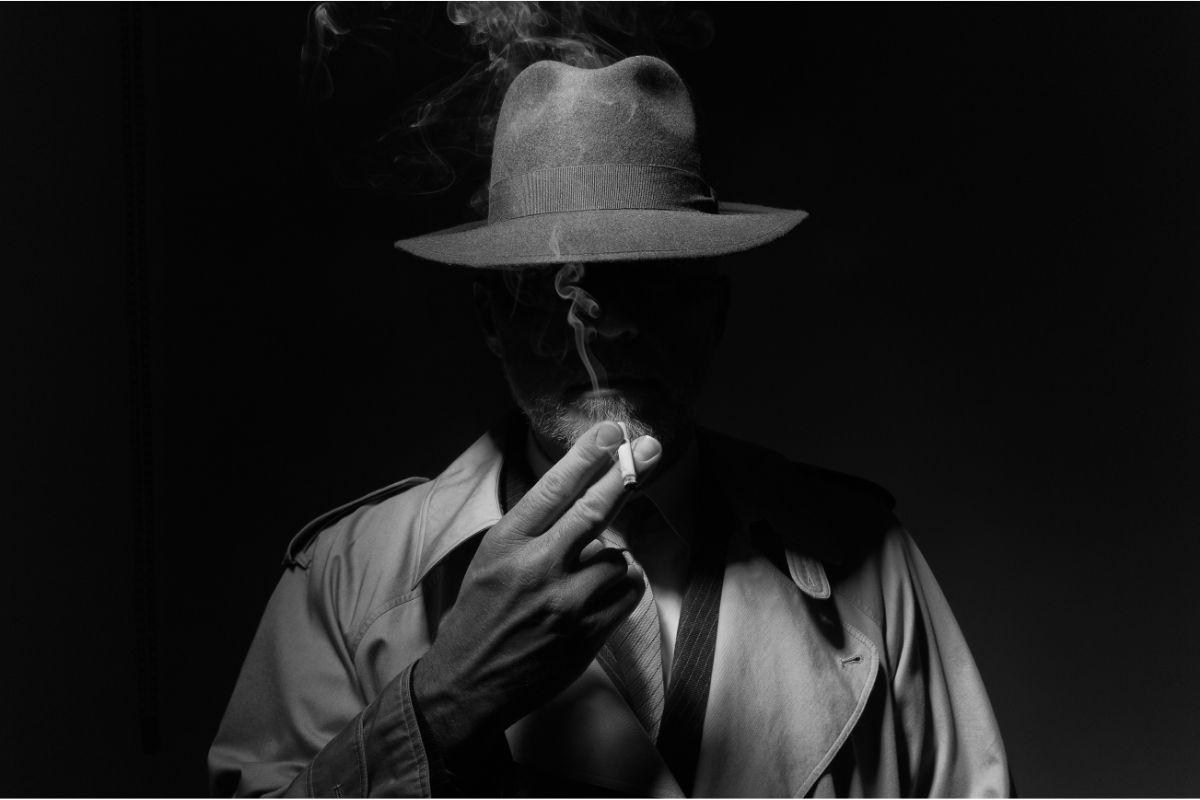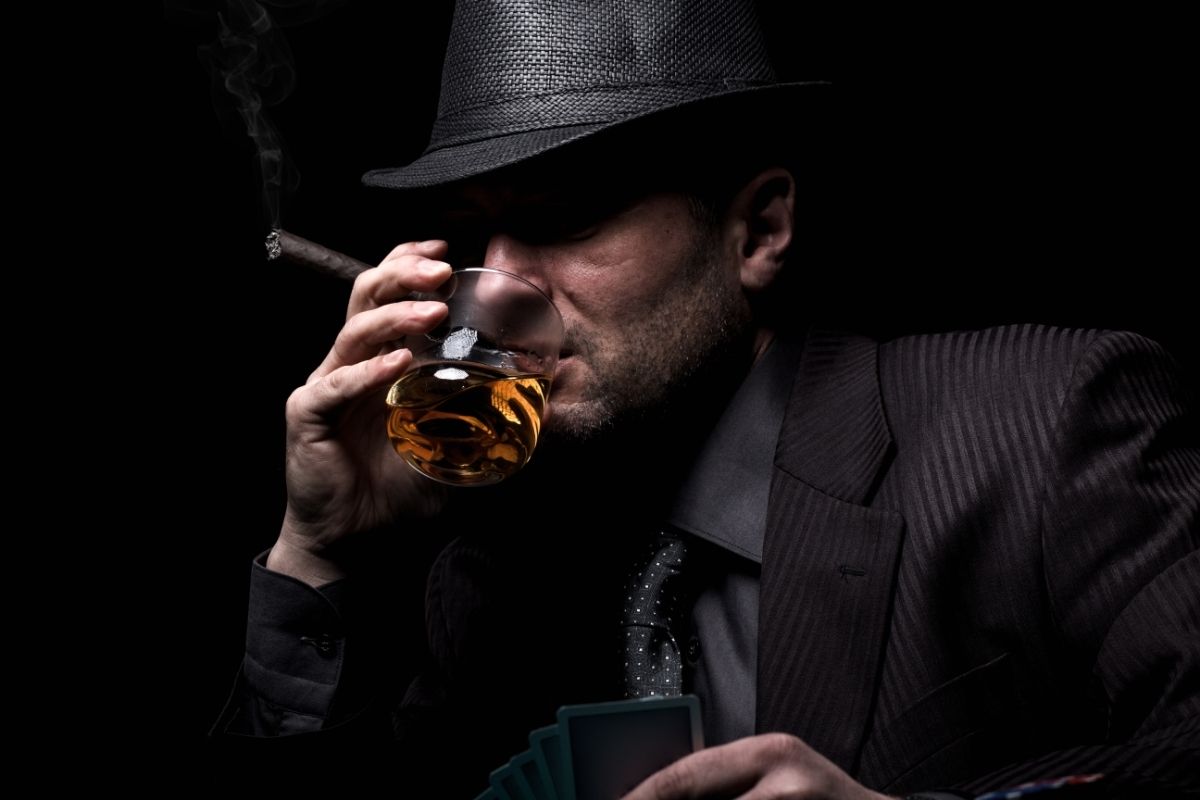What is a Don?
Have you ever heard of the term Don? But what does Don mean in Italian? A Don in Italy and Spain is an honorific title bestowed upon priests and men of good families.
A Don is also a term of honor for priests and respect for the head or leading member of a family. You will often find the word Don before a person’s name. It is an honorific title.

What Does Don Mean in Italian?
We take a look at the Don meaning in Italian. The Don is a term of honor for priests or monks, generally, those who head their order or monastery, and a term of respect for the head or leading member of a family. It does not necessarily denote nobility, and you may bestow it upon an ordinary person of good standing.
Don Juan, Dom Perignon, and other examples come to mind. Donna, Domina, and Dona are the female equivalents.
Why is a Mafia Boss Called a Don?
The Mafia began as a criminal organization in Sicily, Italy. In Italian, the word ‘Don’ means “boss.” As a result, the Mafia gang leader became known as a Don. Capo Crimini, which means “super boss,” is a synonym for Don in Italian.
10 Famous Mafia Dons
Several people discussed below earned the Don Mafia titles across the globe. Most used the Don abbreviation before their names. They include:
Al Capone
Al Capone was one of the powerful Mob bosses in Chicago from 1925 to 1931. Capone, who was born in Brooklyn, New York, in 1899, joined the James Street Boys gang as a teenager, where he met his mentor, Johnny Torrio. He accompanied Torrio to Chicago and eventually assisted him in running his bootlegging business.
His use of extreme violence to maintain power, as well as the public execution of his opponents in the Saint Valentine’s Day Massacre in 1929, made him unpopular, earning him the “Public Enemy No. 1.” With public pressure mounting to imprison him, the government sent him to prison in 1931 for tax evasion.
After sentencing him for 11 years in prison, Capone suffered a stroke, where he eventually served eight and suffered a heart attack in 1947. That earned him the Don title.
Bugsy Siegal
Bugsy Siegel, born in 1906 in Brooklyn, New York, was best known as a Mafia hitman and enforcer, though he managed his rackets. As a close associate of Meyer Lansky, Siegel became involved in bootlegging and gambling before co-founding murder, the Mob’s enforcement arm.
Siegel moved to California in 1936 and began developing rackets for Mob bosses on the East Coast. During his time there, he began courting the attention of Hollywood celebrities and rose to prominence due to his good looks and charm.
Eventually, he started developing casinos in Las Vegas, Nevada, and with the assistance of his girlfriend Virginia Hill, he stole some of the Mob funds intended for construction costs.
Enraged by Siegel’s betrayal, Lansky and other East Coast executives ordered a hit on the hitman. Siegel was 41 years old when he was killed by a barrage of bullets at his girlfriend’s home in Beverly Hills in 1947.
Lucky Luciano
Lucky Luciano, born in Sicily in 1897 and raised in New York City, was a crucial figure in the formation of the National Crime Syndicate and is widely regarded as the architect of modern organized crime in America, thanks to the establishment of its governing body, the Commission, in 1931.
As the head of the Genovese Crime Family during that decade, Luciano became the most powerful Mob boss. After years of pursuing Luciano, District Attorney Thomas E. Dewey imprisoned the Mobster in 1936 for his prostitution activities.
Luciano, who was serving a minimum 30-year sentence, reduced his prison time by assisting the United States Navy’s security measures during World War II. He was deported back to Italy in 1946, where he continued to run his drug operations in the United States. He suffered a heart attack in a Naples airport in 1962.

John Gotti
John Gotti, nicknamed “The Dapper Don” for his love of fine suits and media attention, rose to become the most powerful Mob boss in America during the 1980s. Gotti, born in Queens, New York, in 1940, was known for his reckless personality, which he displayed after ordering a hit on his Gambino Crime Boss, Paul Castellano, in 1985.
Following the assassination, Gotti took over and amassed millions of dollars through various criminal activities ranging from loan sharking and prostitution to illegal gambling and narcotics distribution. Even though he escaped prison several times during the 1980s, earning him the moniker “Teflon Don,” the feds continued to pursue and build a case against him.
Gotti was sent to prison in 1992 for various crimes, including five counts of murder (one of which was Paul Castellano), tax evasion, and racketeering, thanks to the assistance of Gotti’s second in command Salvatore “Sammy the Bull” Gravano. In 2002, he died of throat cancer in a federal prison in Missouri.
Vito Genovese
Vito Genovese, known for his insatiable desire for money and power, is credited with empowering and undermining the American Mafia by the end of his reign. Genovese, born in the province of Naples in 1897, moved to Manhattan as a teen. During prohibition, he rose to power and worked closely with Luciano, assisting him in establishing the commission.
Genovese fled to Italy to avoid a murder charge, and from there, he ran heroin operations in the United States. During WWII, he aided Benito Mussolini‘s fascist efforts but was eventually apprehended and deported to the United States to face a murder charge.
After a key witness for the trial was murdered, Genovese was released and proceeded to clean house, killing several enemies without hesitation and reestablishing his power among New York City’s crime family.
Genovese’s intimidation of his underling, Joe Valachi, led to the latter becoming the first American gangster to reveal many secrets about the organization and testify before the government. As a result, Genovese was sent to prison in 1958 for drug possession and distribution, and he died of a heart attack 11 years later in a Missouri prison.
Frank Costello
Frank Costello, born in Cosenza, Italy, in 1891, grew up in East Harlem and eventually became the 104th Street Gang’s leader. Costello allied himself with Luciano in the 1920s, and the two became involved in gambling and bootlegging, establishing operations in both New York and the South.
Costello, Luciano’s closest business partner, began gaining widespread political influence locally and eventually became the main syndicate boss after Luciano was imprisoned for running a prostitution ring. Costello had his run-ins with the law in the 1950s, being thrown in and out of prison for contempt and later tax evasion by the US government.
In 1957, he was shot in the head on the orders of a rival. Genovese, a rival New York Mob boss, issued the order. Costello miraculously survived and continued his operations, despite greatly diminishing his power. Costello died at the age of 82 after suffering a heart attack.
Tony Accardo
In 1906 in Chicago, Tony Accardo became a protege of Al Capone, who helped him rise through the ranks of the Chicago Crime Syndicate. Accardo became the head of the Chicago Outfit in 1947, and he would continue to live a life of crime for the next several decades.
Under his leadership, the Mob’s profitability increased, shifting from extortion and illegal labor to narcotics smuggling and the use of slot machines and call girl services.
Although Accardo was accused of several murders during his criminal career, ranging from his alleged participation in the Saint Valentine’s Day Massacre in 1929 to his alleged retaliatory murder spree in response to a burglary at his home in 1978, he was never found guilty.
Instead, Accardo was charged with tax evasion in 1960, though the ruling was later overturned. Accardo, the last true boss of the Chicago Outfit, retired from the Mob and refused to testify against the organization during senate hearings, invoking the Fifth Amendment. In 1992, he died of heart and lung problems.
Sam Giancana
Sam Giancana’s place in Mob history is legendary, owing to Giancana’s obsessive interest in American politics. Giancana, born in Chicago in 1908, led the Outfit from 1957 to 1966, after boss Accardo announced his retirement.
Giancana’s ruthless personality made him famous in the underworld, and it was said that by the age of 20, he had committed at least three murders and had over 70 arrests.
Joseph P. Kennedy had asked Giancana to secure votes in Illinois for his son John F. Kennedy’s presidential run in 1960. Giancana was enraged when JFK gave his newly appointed Attorney General brother Robert F. Kennedy the go-ahead to pursue organized crime.
To this day, conspiracy theories abound that the Mob, specifically Giancana himself, staged JFK’s assassination. Giancana left the country and lived in Mexico and parts of South America after spending a year in prison in the mid-1950s for refusing to testify against Mob activities.
He returned in 1974 to testify to the government about his knowledge of the CIA’s attempts to assassinate Fidel Castro. Giancana was assassinated a year later while preparing a meal at his home in Oak Park, Illinois.
Frank Lucas
Frank Lucas was born in North Carolina in 1930 and moved to Harlem, New York. Under the tutelage of Harlem Mob boss Bumpy Johnson, Lucas rose to become a powerful drug kingpin in Harlem in the 1960s and 1970s, selling heroin and cutting out the middleman by purchasing directly from his Southeast Asian suppliers.
By the 1970s, Lucas was making $1 million per day from his “Blue Magic” heroin and living large, which drew the attention of authorities. Lucas was convicted of drug charges on both the federal and state levels following a police raid on his New Jersey home in 1975, sending him to prison for 70 years.
Lucas was released due to his cooperation as a state witness in drug cases.
He later expressed regret for his criminal life and the harm it caused to his community. The 2007 film American Gangster, starring Denzel Washington as Lucas, was made based on his life. Lucas died of natural causes in 2019 at the age of 88.

Paul Castellano
Paul Castellano As the godfather of New York City’s most powerful crime family, the Gambino crime family, Paul Castellano was known for his business acumen, which led to Mob boss Carlo Gambino naming him his successor.
Castellano, born in Brooklyn, New York, in 1915, rose through the Mob ranks and focused on transforming non-legitimate white-collar businesses into profitable enterprises, infiltrating the construction and food industries with his Mob connections. After becoming the Gambino crime family’s leader, he mostly ran operations from his mansion on Staten Island.
He lived there lavishly and charged higher dues from his underlings. This fueled resentment within Castellano’s unit, particularly those who opposed his succession, including Gambino member Gotti. Indicted and charged on federal and state levels.
Castellano was assassinated in 1985 by the volatile Gotti, who feared Castellano would get rid of him for secretly selling narcotics, which the latter forbade. Because the murder was unauthorized, many Mafiamafia figures blamed Gotti for the Gambino crime family’s subsequent demise.
Capeesh!
From the information in this article, I am sure you now understand what we mean by the term Don Mafia. Besides, you understand the different people referred to as Dons and probably why. You are also now aware of the many activities they were involved in. These are the activities that qualified them to earn the title of the Don. Read our article and find out the best Italian mafia movies.

Community of passionate writers and content creators who share a love for Italian heritage, culture, travel, food, and the Italian-American community. Our mission is to celebrate Italy’s rich history and traditions and connect with others who share the same passion.

